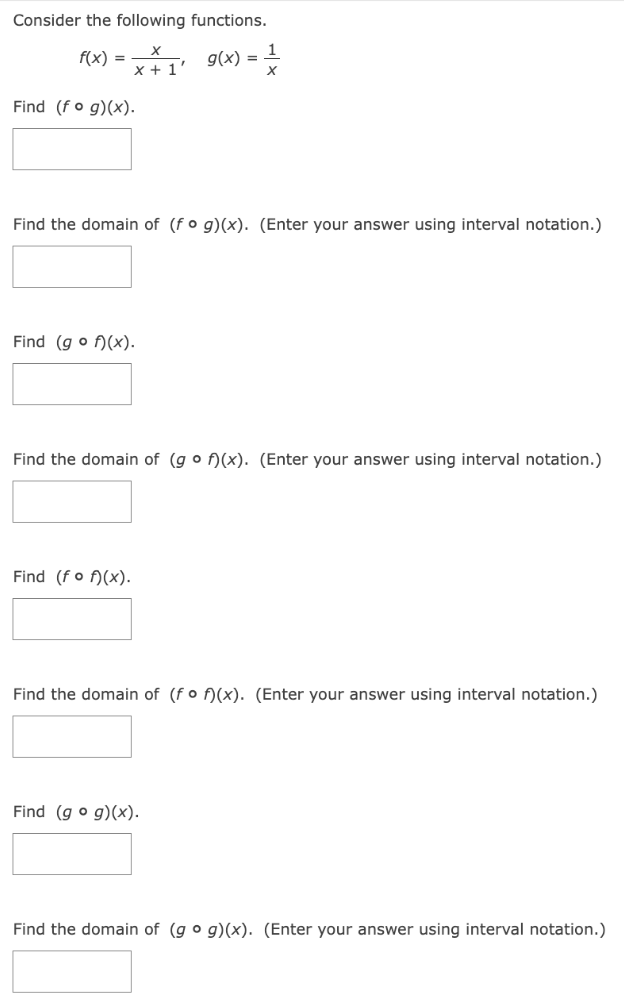Consider the following functions. f(x) = x x+1, g(x) = 1 x Find (f∘g)(x) Find the domain of (f∘g)(x). (Enter your answer using interval notation.) Find (g∘f)(x). Find the domain of (g∘f)(x). (Enter your answer using interval notation.) Find (f∘f)(x) Find the domain of ( f∘f)(x). (Enter your answer using interval notation.) Find (g∘g)(x) Find the domain of (g∘g)(x). (Enter your answer using interval notation.)
